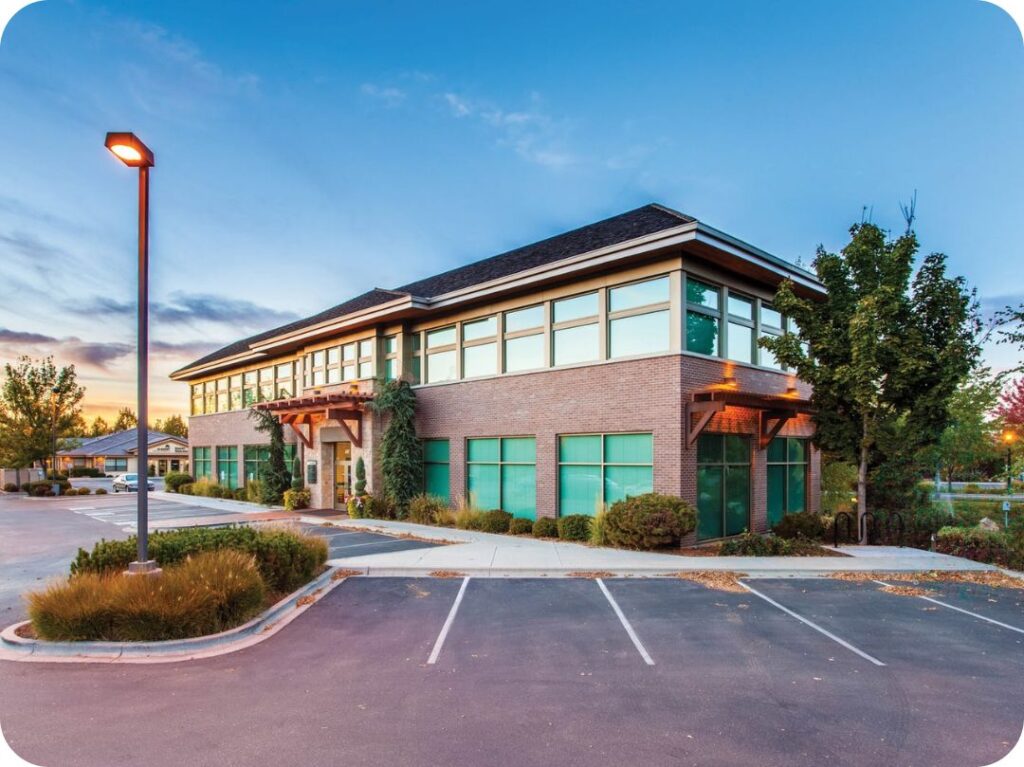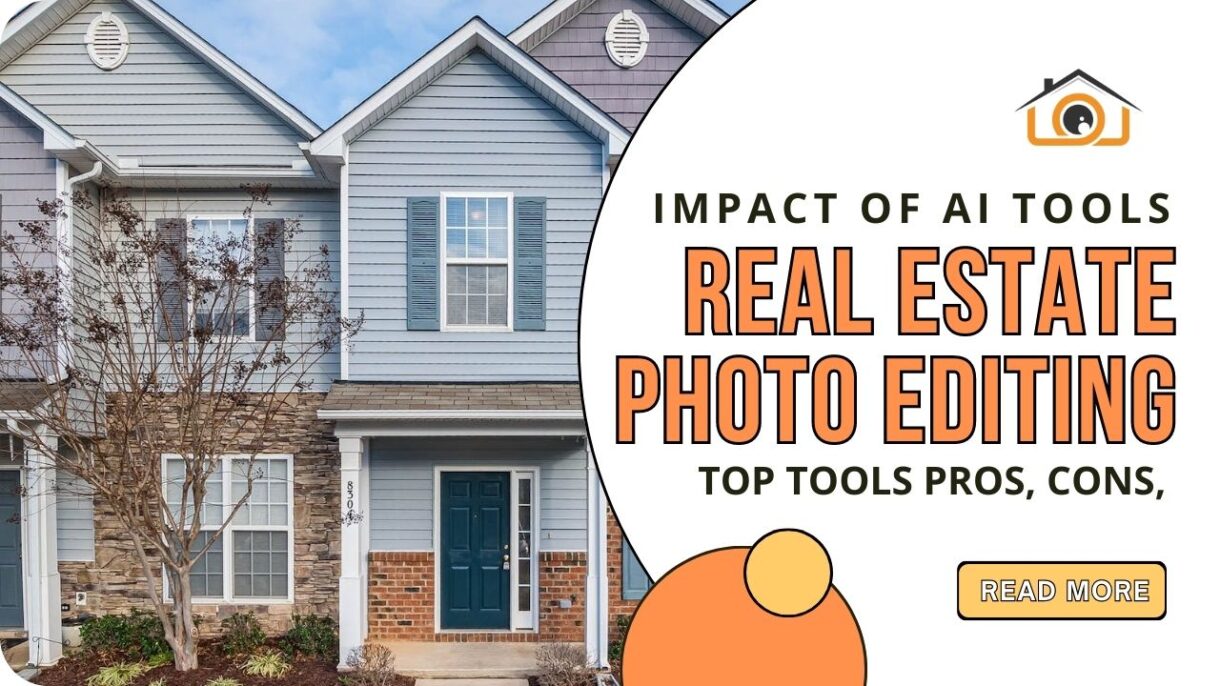The Impact of AI Tools on Real Estate Photo Editing: Pros, Cons, and Top 7 Tools
In the dynamic world of real estate marketing, the old adage “a picture is worth a thousand words” holds truer than ever. Captivating visuals have the power to make properties stand out in a crowded market, attracting potential buyers and conveying the essence of a home. This is where the art of real estate photo editing comes into play, refining raw images into polished, enticing representations of properties. As technology evolves, so does the way we approach image enhancement. One of the most transformative advancements in recent years is the integration of AI tools into the realm of real estate photo editing.
Table of Contents
Role of AI Tools in Real Estate Photo Editing
The introduction of AI tools has ushered in a new era of efficiency and innovation in real estate photo editing. These tools are designed to automate and augment various aspects of the editing process, offering benefits that resonate deeply with photographers and real estate professionals. Beyond basic enhancements, AI-powered systems can tackle advanced tasks such as virtual staging, object removal, and even sky replacement. This marks a significant departure from traditional methods, where each of these tasks would demand painstaking manual effort.
AI tools have proven to be game-changers in the industry, elevating the quality of images while also streamlining workflows. They have redefined the boundaries of what’s achievable in real estate photography and how quickly it can be accomplished. Let’s delve into the pros and cons of employing AI tools for real estate photo editing to better understand their impact.
Pros of Using AI Tools for Real Estate Photo Editing
1. Time Efficiency
The fast-paced nature of the real estate market demands efficient processes. This is where AI tools shine brightly. By automating repetitive editing tasks, these tools significantly reduce the time spent on each image. The hours that would have been dedicated to adjusting colors, correcting lighting, and enhancing details can now be directed toward more creative pursuits.
2. Consistency and Quality
Maintaining a consistent level of editing quality across a large volume of images can be a challenge when relying solely on manual editing. AI tools excel in this area by applying predefined algorithms consistently. This not only ensures that every image receives the same level of attention but also minimizes the risk of human error and subjective disparities.

3. Cost Savings
In a competitive industry, cost-effectiveness is paramount. AI tools can help reduce labor costs associated with manual editing. Instead of allocating significant resources to editing, real estate professionals can harness the power of AI-driven systems. This cost-saving advantage becomes particularly apparent when dealing with large batches of images.
4. Speed of Delivery
In the fast-moving world of real estate, time is often of the essence. AI tools accelerate the editing process, allowing photographers and editors to deliver high-quality images promptly. This rapid turnaround not only aligns with market demands but also enhances customer satisfaction by providing swift results.
5. Advanced Editing Capabilities
The capabilities of AI tools extend far beyond basic enhancements. From virtual staging that brings empty rooms to life, to seamlessly removing unwanted objects from images, AI tools empower real estate professionals to transform properties digitally. Sky replacements, which were once intricate tasks, can now be executed with precision, allowing for a range of creative possibilities.
6. Workflow Enhancement
The integration of AI tools into the editing workflow is a strategic move that pays dividends. These tools streamline the entire process, from importing images to delivering the final edits. The ability to categorize and organize images efficiently simplifies the management of large volumes of photos. This not only optimizes productivity but also ensures that no detail is overlooked.
7. Flexibility and Experimentation
AI tools not only bring efficiency but also flexibility. Photographers and editors can experiment with different editing styles without the fear of committing to irreversible changes. Trying out various looks and effects becomes an accessible endeavor, encouraging creative exploration.
Cons of Using AI Tools for Real Estate Photo Editing

1. Lack of Personalization
While AI tools excel at automation, they may lack the personal touch that skilled human editors bring to their work. The unique style and preferences of photographers might be diluted in the pursuit of automation.
2. Learning Curve and Technical Challenges
Implementing AI tools requires a learning curve. Photographers and editors must familiarize themselves with the technology and its features, which might lead to an initial period of adjustment. Technical challenges, such as compatibility issues with existing software, can also arise.
3. Overdependence on Technology
An overreliance on AI tools could hinder the cultivation of essential human editing skills. Creativity, artistic judgment, and the ability to adapt to unique challenges might suffer if automation becomes the sole approach.
4. Limited Artistic Judgment
AI tools operate based on algorithms and predefined patterns. Complex artistic decisions that involve subjective nuances might elude these tools. Editors often make choices that require a deep understanding of aesthetics, something AI tools are still developing.
5. Data Privacy and Security
The integration of AI tools involves sharing images and data with external platforms. This raises concerns about data privacy and security, especially when dealing with sensitive real estate imagery. Ensuring that the tools and platforms used adhere to robust security protocols is crucial.
6. Compatibility and Integration
Not all AI tools seamlessly integrate with existing editing workflows and software. Transitioning to a new system might require adjustments that disrupt the established rhythm of operations. It’s essential to choose tools that align with existing practices.
7. Ethical Considerations
As AI tools become more sophisticated, they can generate highly realistic images that might inadvertently misrepresent properties. Ethical considerations arise when these AI-generated images blur the line between reality and digitally enhanced representation. Full transparency in disclosing the use of AI tools is vital.
7 Best AI Tools for Real Estate Photo Editing
In the realm of real estate photo editing, the marriage of technology and creativity is exemplified by a range of exceptional AI tools. These tools have earned their stripes by revolutionizing the way property images are enhanced and presented. Below, we’ve compiled a list of seven standout AI tools that have earned their place in the toolkit of real estate professionals:
- Pixpa AI Photo Editor: Pixpa’s AI-powered photo editor boasts a comprehensive suite of features tailored to the needs of real estate professionals. From automated retouching to sky replacements, Pixpa AI streamlines the editing process, allowing photographers to focus on capturing the perfect shot.
- Photolemur: This AI tool stands out for its user-friendly approach to enhancing images. Photolemur automates enhancements like exposure correction, color adjustments, and noise reduction, ensuring that real estate images appear vibrant and captivating.
- Adobe Sensei: Adobe’s AI technology, Sensei, has made its way into the real estate photography domain. Integrated into Adobe’s suite of software, Sensei automates tasks such as image tagging and organization, simplifying the management of extensive image libraries.

- Snappr: Snappr’s AI-driven platform offers a wide range of editing services tailored to real estate professionals. From HDR blending to virtual staging, Snappr’s tools enhance property visuals with precision, helping listings stand out in a competitive market.
- Rela: Geared specifically towards real estate, Rela employs AI to transform vacant spaces into beautifully staged rooms. Virtual furniture placement, decor additions, and even changing wall colors are executed flawlessly, enabling potential buyers to visualize a property’s potential.
- Fotor: With a dedicated real estate photo editing suite, Fotor’s AI tools enhance property images by intelligently adjusting lighting, correcting distortions, and even enabling virtual window views. It offers an efficient and intuitive approach to enhancing visual content.
- Luminar AI: Luminar AI combines sophisticated AI capabilities with an emphasis on creative enhancement. Beyond standard editing, it offers tools that help photographers craft distinctive visual narratives, pushing the boundaries of what’s possible in real estate photography.
When choosing an AI tool for real estate photo editing, it’s essential to assess how well it aligns with your specific needs. Whether you prioritize efficiency, advanced editing capabilities, or seamless integration with your existing workflow, these tools provide an array of solutions to elevate your visual content.
Conclusion
In the ever-evolving landscape of real estate marketing, AI tools have emerged as powerful allies for photographers, editors, and real estate professionals. Their ability to expedite processes, maintain consistency, and enhance image quality has reshaped the industry. However, while embracing these tools brings undeniable benefits, it’s equally important to tread thoughtfully, balancing automation with the unique skills that human editors provide. By doing so, the real estate industry can leverage AI tools to create captivating visuals that truly captivate the essence of properties.
Closing Thoughts
As technology continues its relentless march, the role of AI in real estate photo editing will undoubtedly expand further. Industry professionals must adapt, staying attuned to the evolving capabilities of AI tools while preserving the artistry that makes each property distinct. By harnessing AI’s strengths and addressing its limitations, real estate professionals can unlock new levels of creativity and efficiency, shaping the visual narratives that define the homes of tomorrow.
